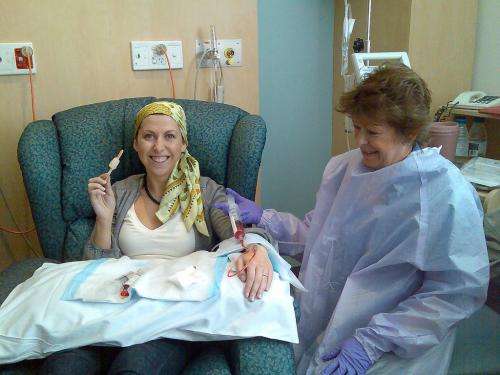Improved imaging agent pinpoints hostile cancer

Positron emission tomography (PET) could prove to be a better imaging procedure than magnetic resonance imaging (MRI) in the detection of glioblastoma, the most aggressive type of primary brain tumour.
Funded by a Cancer Council WA grant of more than $143,000, researchers at the University of WA's School of Medicine and Pharmacology are testing a new PET imaging agent that collects in high levels in glioma cells but low levels in normal brain tissue.
The imaging agent O-(2-[18F]-fluoroethyl)-L-tyrosine, known as FET, has already shown promise in clinical studies with treatment planning and monitoring treatment response and outcome in a small number of glioblastoma patients.
UWA Associate Professor Roslyn Francis says the aim is to validate the imaging test in more patients and assess whether FET-PET can be used for routine management of patients with glioblastoma.
"FET is an amino acid PET imaging agent," she says.
"Clinical studies have shown amino acid transport is increased in malignant transformation of a variety of tumours.
"Agents such as FET demonstrate activity in both low-grade and high-grade glioblastoma and are independent of disruption to the blood-brain barrier.
"This imaging modality is complementary to MRI and can increase sensitivity of imaging because the uptake can be seen in sites of tumours that are non-enhancing on MRI."
Previously, the research team conducted a clinical study with 30 patients using the related agent C11-methionine—another amino acid PET but with a shorter half-life.
The study assessed whether the PET imaging test could ascertain whether there was residual tumour or inflammation present midway through chemotherapy treatment.
"Our current study aims to validate FET-PET imaging as a clinical tool in glioblastoma by establishing reproducible imaging protocols, acquisition parameters, quantitative guidelines and determining inter and intra-observer variability," A/Prof Francis says.
Response assessed to chemoradiotherapy
"Data will also be collected on the utility of FET-PET imaging for assessing response to treatment with chemoradiotherapy in a cohort of patients with glioblastoma.
"The aim is to use the results of this initial single site study to form the basis of a multicentre imaging cohort study across several sites in Australia."
A sub-study will also assess how FET-PET imaging may impact on a planned radiotherapy treatment volume compared to using MRI alone.
It will utilise baseline FET-PET images collected as part of the main research project.
"It's an image analysis study where we will hopefully gain information to ascertain whether incorporating areas of FET uptake into a radiotherapy planning field may influence sites of subsequent disease progression or relapse," A/Prof Francis says.















